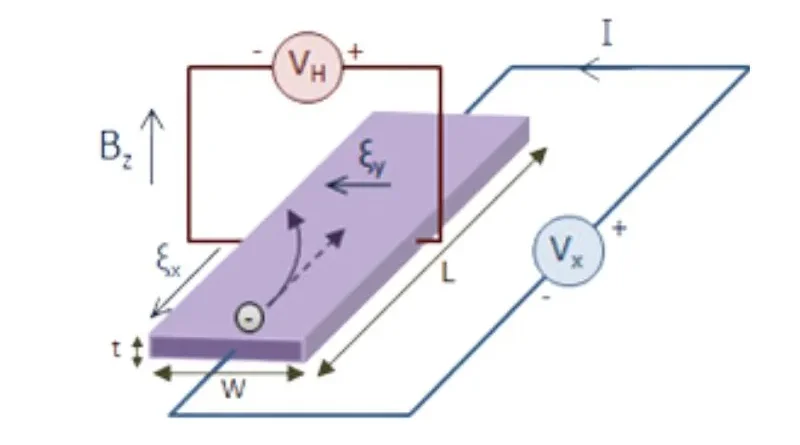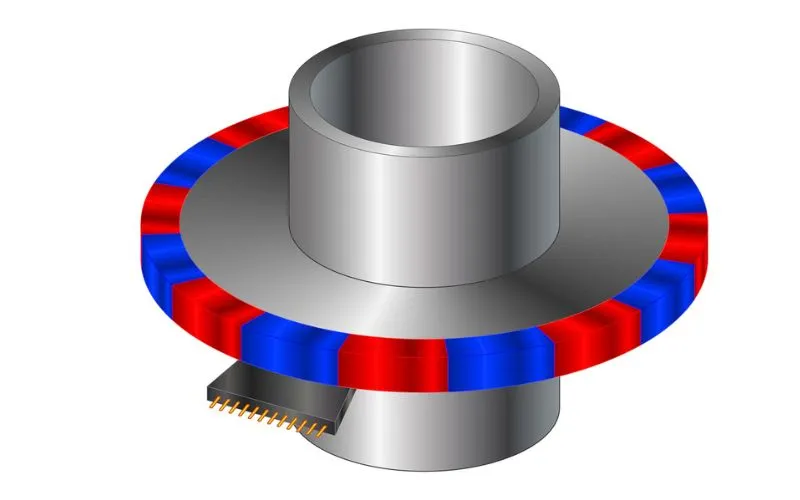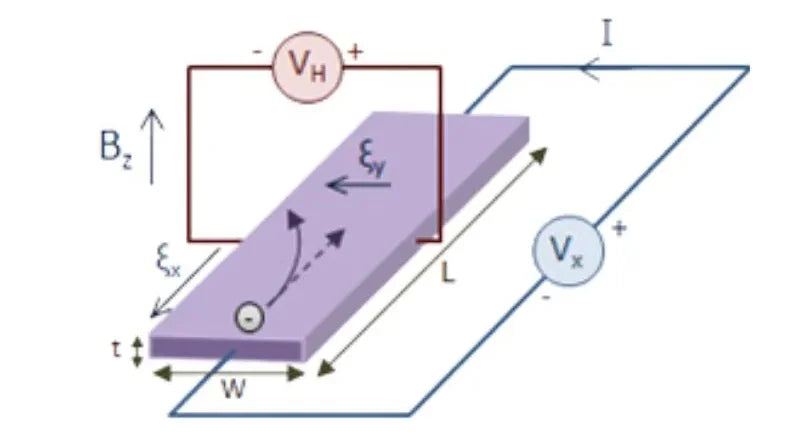
When we study physics, we often come across concepts that help us understand the fundamental principles of the universe and find practical applications in our everyday lives. One such phenomenon is the Hall effect, a fundamental concept that has found its way into countless technologies and industries. This comprehensive guide explores the fascinating principle of the Hall effect, the theory behind it, and its wide-ranging applications across multiple fields.
Understand the principle of the Hall effect

The Hall effect is a phenomenon discovered by physicist Edwin Hall in 1879. Under the influence of a magnetic field, an electrical voltage appears in a conductor perpendicular to the current flow. It is a fundamental concept that forms the basis for many practical applications, from detecting magnetic fields to measuring current.
What is the Hall effect?
The Hall effect is a fundamental phenomenon discovered by American physicist Edwin Hall in 1879. It involves the generation of an electrical voltage across a conductor via an electric current and a magnetic field. This voltage, called Hall voltage, is a direct result of the movement of charged particles, usually electrons, within the conductor when it is exposed to a magnetic field.
How does the Hall effect work?
The Hall effect is caused by the Lorentz force, which acts on the movement of charged particles. When an electric current flows through a conductor, electrons move in a specific direction. When a magnetic field is applied perpendicular to the current flow, it exerts a force on these moving electrons, causing them to deviate from their original path. This creates a voltage difference across the conductor, which leads to Hall voltage.
The theory behind the Hall effect
To examine the Hall effect in more detail, we turn to quantum mechanics. There, electrons behave like waves and interact with magnetic fields to create discrete energy levels called Landau levels. The Hall coefficient and the mobility of charge carriers also play a role. They determine the size of the Hall voltage and allow accurate measurements in real applications.
Quantum mechanics and the Hall effect
The Hall effect can be better understood using quantum mechanics. According to this theory, electrons exhibit wavelike behavior and occupy energy levels within the atomic structure of the conductor. When exposed to a magnetic field, these energy levels split into discrete Landau levels, causing electrons to follow curved paths. This phenomenon ultimately leads to the creation of Hall voltage.
Hall coefficient and mobility
The Hall coefficient (R_H) is crucial to understanding the Hall effect. It quantifies the relationship between the induced Hall voltage, current and magnetic field. The mobility (μ) of the charge carriers in the conductor also plays an important role. It represents the ease with which electrons move through the material and directly affects the magnitude of the Hall voltage.
Applications of the Hall Effect

Although the Hall effect was discovered more than a century ago, its application still shapes our modern world. Here are some of the notable areas where the Hall effect finds practical application:
Magnetic Field Sensors
The Hall effect is often used in sensors for measuring magnetic fields. Hall effect sensors are used in various devices, including compasses, automotive applications (speed sensors and ignition controls), and industrial equipment, to accurately detect and measure magnetic fields.
Current measurement
Accurate measurement of current is critical in electronic circuits. Hall effect current sensors provide a non-contact method for measuring electrical current. These sensors are used in power distribution, electric vehicles and renewable energy systems, ensuring accurate monitoring and control.
Proximity and position detection
The Hall effect is used in proximity sensors and position sensors. These sensors can detect the presence or absence of a magnetic field or determine the exact location of an object. Applications range from detecting the opening and closing of laptop lids to ensuring the correct functioning of touchless faucets in public restrooms.
Speed detection in rotating machines
Hall effect sensors record the speed and direction of rotation of machines such as fans, motors and gears. This information is essential to maintain optimal performance, avoid overheating and ensure safety in various industrial processes.
Hall effect engines in spacecraft
In aerospace engineering, the Hall effect is used in Hall effect engines. These propulsion systems use electromagnetic fields to accelerate ions and generate thrust in spacecraft. This makes them efficient and ideal for long-term missions such as space exploration.
Progress and future prospects
As technology advances, applications of the Hall effect will likely continue to expand. Researchers are exploring new materials and techniques to make innovative use of the Hall effect. For example, the development of topological insulators has opened up opportunities for producing new electronic devices with unique properties.
Conclusion
Originally a scientific curiosity, the Hall effect has become a cornerstone of modern technology. Its ability to convert the interaction between magnetic fields and moving charge carriers into useful electrical signals has made it indispensable in countless applications. From improving our understanding of fundamental physics to developing cutting-edge technologies, the Hall effect plays a critical role in shaping our world. As we push the boundaries of scientific discovery and technological innovation, the Hall effect will continue to be crucial to our future efforts.
Common questions
1. What are the main components of the Hall effect?
The main components of the Hall effect are a conductor, an electric current flowing through it, and a magnetic field applied perpendicular to the current flow. When these elements interact, Hall voltage is created.
2. How is the Hall effect used in everyday life?
The Hall effect has a wide range of practical applications, including magnetic field detection, current measurement, proximity and position detection, velocity detection in rotating machinery and spacecraft propulsion systems.
3. What are the recent advances in Hall effect technology?
Recent advances include research into topological insulators and their potential for developing innovative electronic devices. Furthermore, ongoing research aims to improve the sensitivity and accuracy of Hall effect sensors for various applications.

